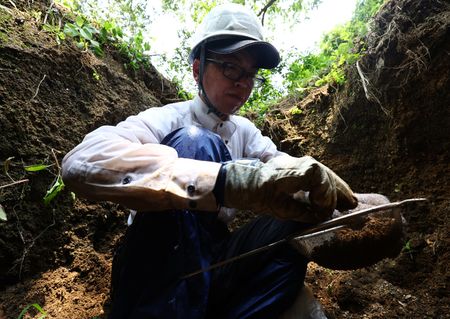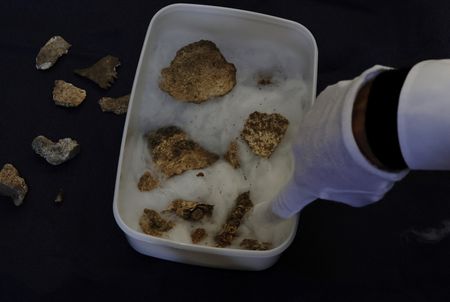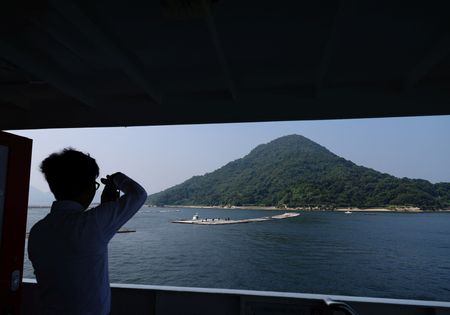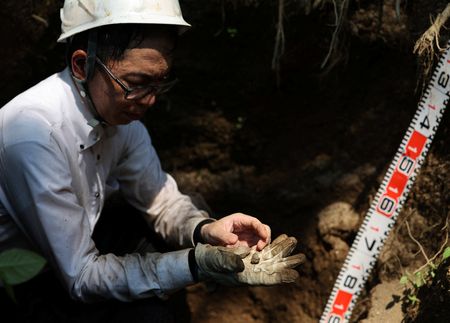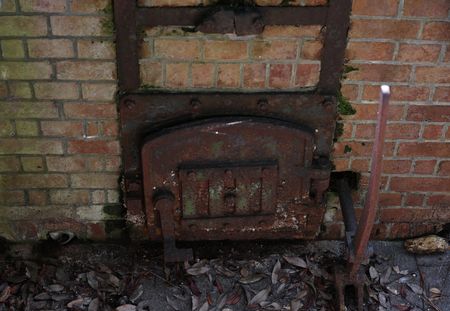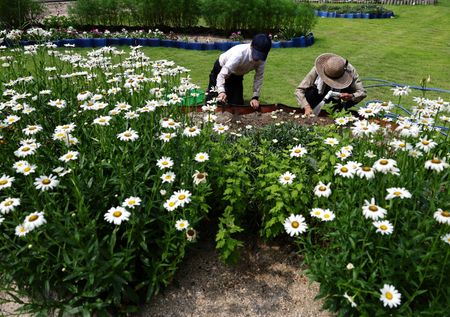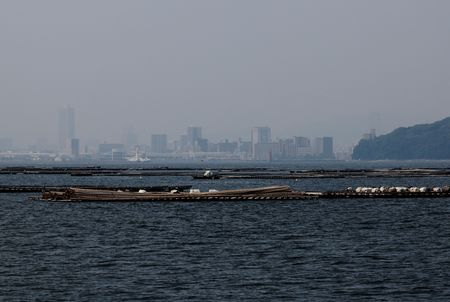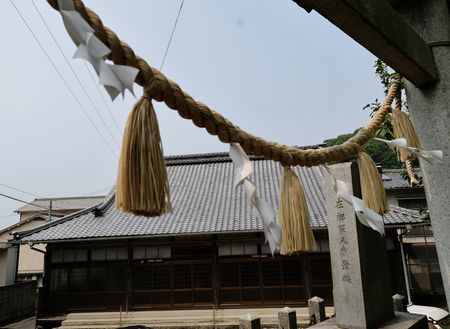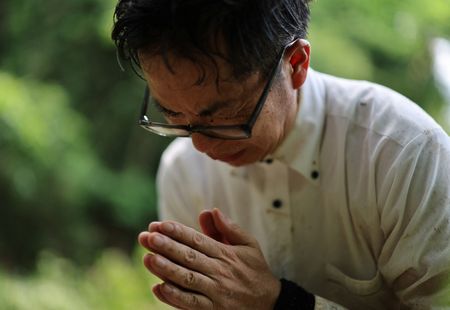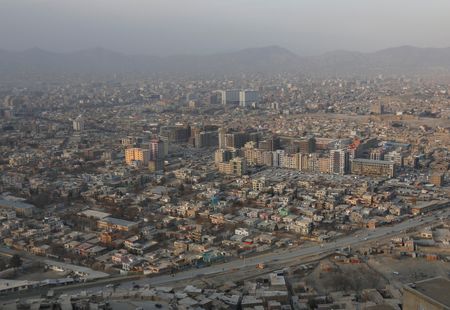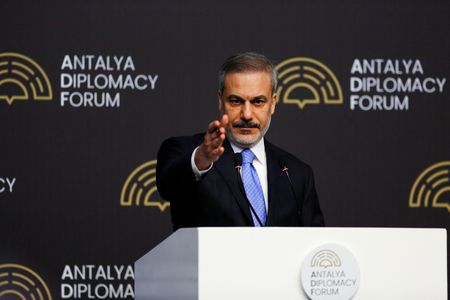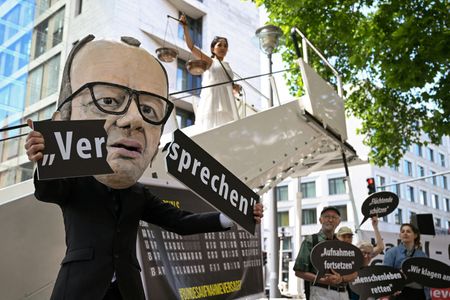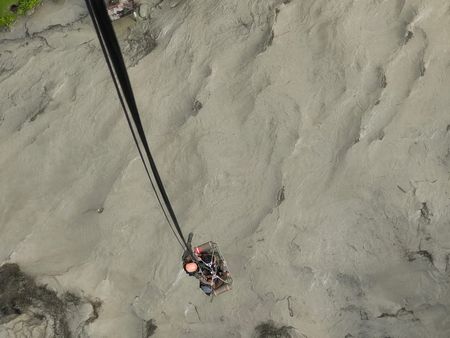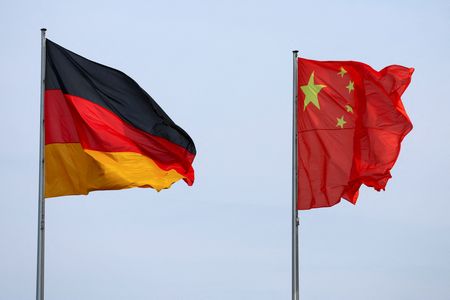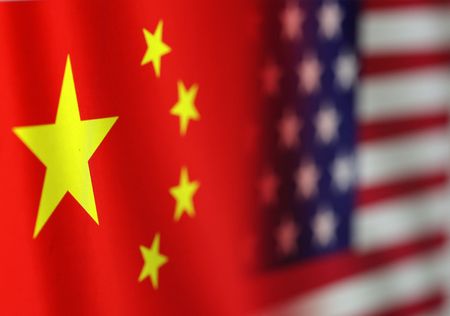By Tom Bateman
NINOSHIMA, Japan (Reuters) -Dozens of times a year, Rebun Kayo takes a ferry to a small island across from the port of Hiroshima in search of the remains of those killed by the atomic bomb 80 years ago.
For the 47-year-old researcher, unearthing even the tiniest fragments on Ninoshima Island is a sobering reminder that the war is a reality that persists – buried, forgotten and unresolved.
“When we die, we are interred in places like temples or churches and bid farewell in a ceremony. That’s the dignified way of being sent off,” said Kayo, a researcher at Hiroshima University’s Center for Peace who spends his own time and money on the solo excavations.
After the United States dropped the atomic bomb over Hiroshima on August 6, 1945, instantly killing about 78,000 people and injuring far more, Ninoshima, about 4 km (2.5 miles) from the hypocentre, became a field hospital. Within weeks, some 10,000 victims, both dead and alive, were ferried across the water. Many perished soon after, and when cremations could not keep up, people were buried in mass graves.
While many remains were unearthed in the decades following the war, witness accounts suggested there were more burial grounds. The son of a resident informed Kayo about one area on the island’s northwestern coast in 2014 and from there, he saved up funds and began digging four years later.
NO CLOSURE
In searing heat last weekend, Kayo cut through overgrown brush to return to the spot where he had left off three weeks before. After an hour and a half of digging, he carefully picked out two thumbnail-sized bone fragments from the dirt – additions to the roughly 100 he has unearthed so far.
Every discovery brings home to him the cruelty of war. The pain was never as raw as when Kayo found pieces of a young child’s jaw and tooth earlier this year, he said.
“That hit me really hard,” he said, his white, long-sleeve shirt soaked through with sweat. “That child was killed by the bomb, knowing nothing about the world … I couldn’t come to terms with it for a while, and that feeling still lingers.”
One day, he plans to take all the fragments to a Buddhist temple, where they can be enshrined.
Kayo’s drive for repeating the gruelling task year after year is partly personal.
Born in Okinawa, where some of the bloodiest battles during World War Two were fought, Kayo himself has three relatives whose remains were never found.
Volunteers still descend on Okinawa from all over Japan for excavations, and because the poison ivy in the forests there is prohibitive for him, Kayo returns the favour on Ninoshima instead.
As long as traces of the dead keep turning up, the war’s proximity is palpable for Kayo.
“People today who don’t know about the war focus only on the recovery, and they move the conversation forward while forgetting about these people here,” he said.
“And in the end, you’ll have people saying, ‘even if you drop an atomic bomb, you can recover’ … There will always be people who try to justify it in a way that suits them.”
(Reporting by Kim Kyung-Hoon and Tom Bateman; Writing by Chang-Ran Kim; Editing by Kate Mayberry)

